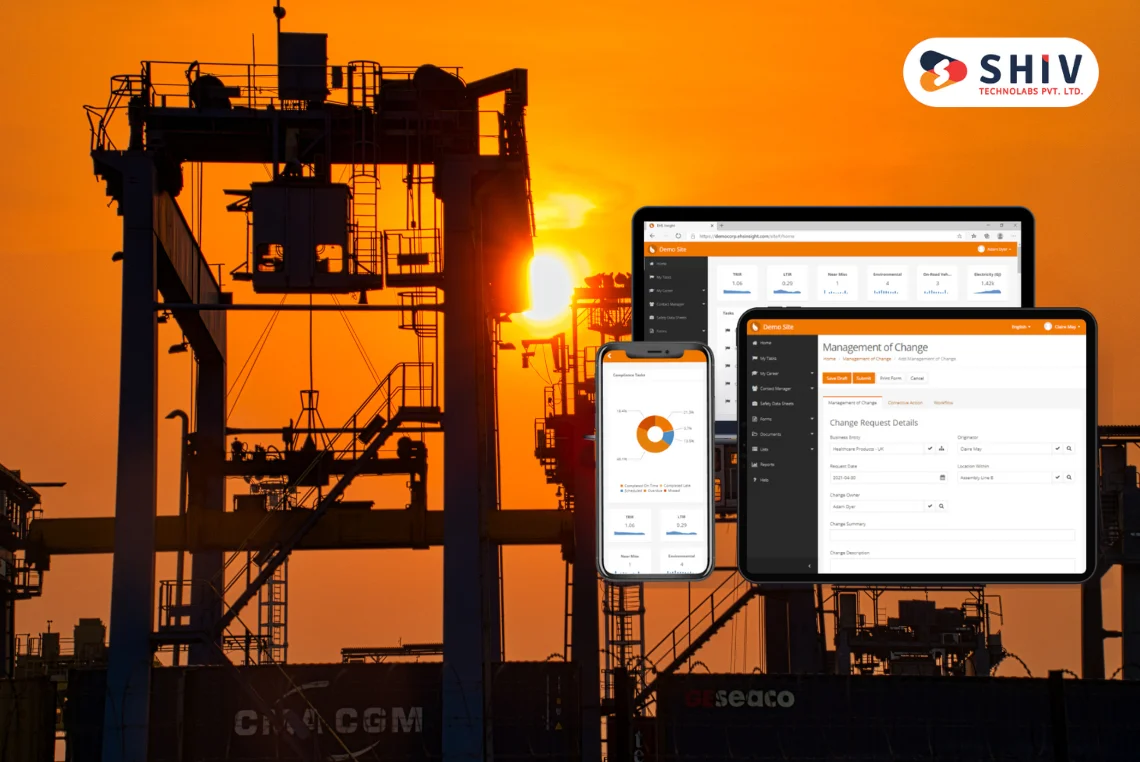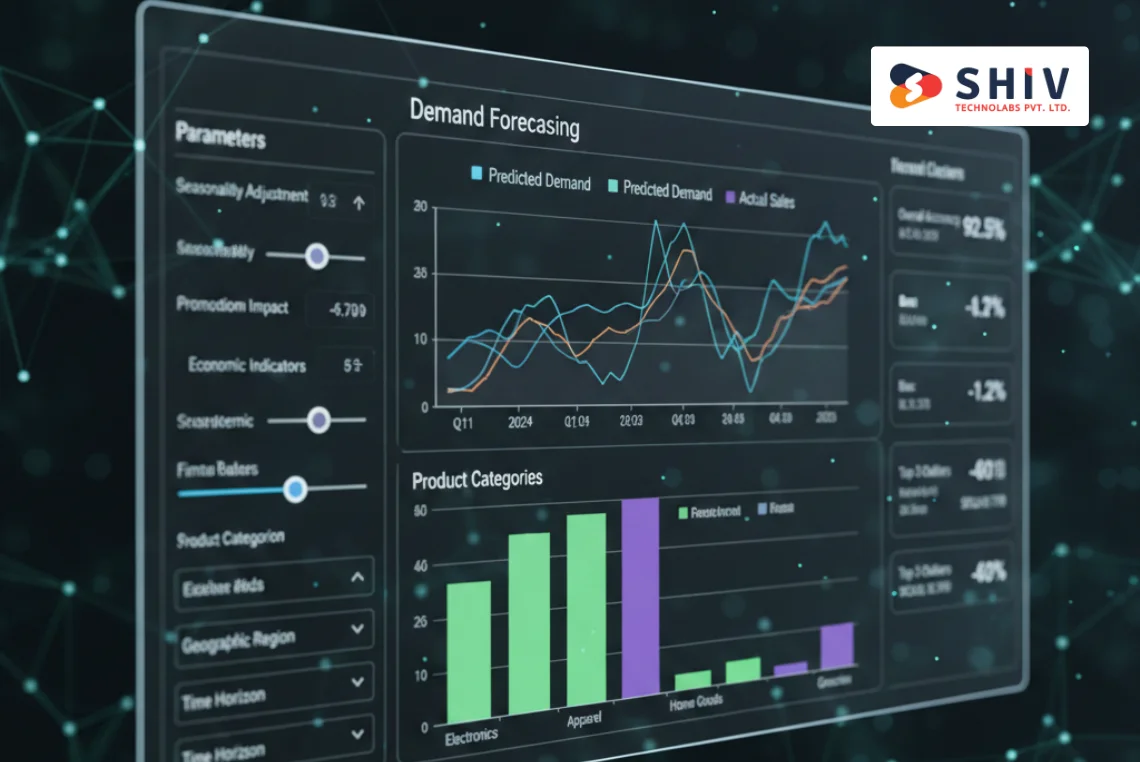Table of Contents
Businesses across finance, telecom, utilities, and retail often deal with unpaid invoices. Managing these receivables through phone calls and spreadsheets no longer works. Manual errors, time-consuming follow-ups, and poor tracking lead to rising losses. This is where debt collection software development plays a critical role.
Modern tools bring structure to recovery operations. They help teams manage collections, automate tasks, and improve contact with debtors. This blog covers everything about building a robust debt collection system, from features and processes to cost.
What Is Debt Collection Software?
Debt collection software is a digital tool built to track, manage, and follow up on overdue accounts. It helps organizations plan and act on collection strategies more effectively. As part of modern Fintech software development, these systems bring advanced functionality to recovery workflows. Whether you’re a small agency or a large finance company, having the right debt collection CRM gives you full control over the process.
At its core, this tool manages account data, automates communication, and logs all collector activities. You can set schedules, view debtor profiles, and track status without shuffling between spreadsheets.
# The Rise of Debt Collection Software in 2025
In 2025, the demand for debt collection software has surged significantly. The global market is projected to grow from $4.11 billion in 2024 to $4.51 billion in 2025, marking a compound annual growth rate (CAGR) of 9.9%. This growth is driven by the increasing need for efficient debt management solutions across various industries.
The integration of artificial intelligence (AI) and machine learning (ML) into debt collection software has revolutionized the industry. AI-powered tools can analyze debtor behavior, predict payment patterns, and optimize collection strategies, leading to higher recovery rates and improved customer relationships.
Debt collection software has become an essential tool for businesses aiming to streamline their debt recovery processes. For companies looking for efficiency, debt collection automation offers a way to handle larger portfolios without increasing manpower.
Key Features of Debt Collection Software

Building a powerful debt collection system starts with the right set of features. Each function plays a specific role in improving how your team tracks accounts, communicates with debtors, and closes outstanding payments. Here’s a breakdown of the must-have debt collection software features and what they do:
1. Debtor Profile Management
Every collection process begins with accurate information. The software should allow you to create detailed debtor profiles that include:
- Contact information
- Payment history
- Total outstanding amount
- Timeline of previous interactions
- Associated agents or teams
Having all this data in one place helps agents act faster and avoid duplicate communication.
2. Automated Communication Tools
Manual follow-ups consume time and cause delays. Debt collection software includes tools to schedule and send:
- Payment reminders (email/SMS/WhatsApp)
- Final notices or warnings
- Payment confirmations
- Agent follow-up alerts
These tools help you set up debt collection automation, where the system takes care of recurring messages based on overdue timelines.
3. Task and Workflow Scheduling
Customizable workflows help teams follow the correct collection steps without guesswork. This structure supports debt collection workflow automation, helping your team work with consistency and fewer errors.
4. Payment Portal Integration
To encourage faster payments, the software should include or connect with secure online payment gateways. This enables debtors to:
- Pay via credit/debit card
- View pending invoices
- Download receipts
Integrating payment options within the debt collection CRM helps reduce friction and improve collection success rates.
5. Role-Based User Access
A reliable debt collection system must support different user roles—agents, supervisors, legal advisors, and admins. Each role should have specific access rights:
- Agents see only assigned accounts
- Managers see overall team performance
- Admins control settings and reports
This structure protects sensitive data and gives people the right tools based on their role.
6. Real-Time Performance Dashboards
Visual dashboards help teams track what’s working and where improvements are needed. A strong debt management software should offer: Number of calls made, Payments recovered, Promises to pay, and Case closure rates. With real-time insights, managers can adjust strategy on the go and improve team results.
7. Document Management and Audit Trails
Your software should allow storing and attaching key documents, such as: Loan agreements, ID proofs, Legal notices, Email logs. Audit trails also track every action taken on an account—who sent a message, when it was viewed, and what the response was. This becomes crucial for legal backing and customer support.
8. Integration with Third-Party Tools
Whether it’s your company’s accounting system, email provider, or a customer portal, your software should support integrations. This makes it easier to sync data without manual entry and keeps everything up to date.
9. Compliance and Security Settings
Debt collection involves handling sensitive financial and personal information. Make sure your platform includes:
- Data encryption
- GDPR or local regulation compliance features
- Consent tracking for communication
- Auto-logout and 2-factor authentication options
Legal compliance isn’t optional—your debt collection software development project should include it from day one.
Also Read: 20 Key Features you should add for a successful Fintech Application
How to Build a Debt Collection Software: Step-by-Step Breakdown

Creating a reliable debt collection tool requires planning, the right tech stack, and a solid understanding of your collection process. Whether you’re working with an in-house team or hiring a software partner, here’s a detailed walk-through of each step involved in the debt collection software process:
Step 1: Define Your Requirements
Start by collecting detailed information about your current process. Ask:
- How do agents currently manage debtors?
- What tools or spreadsheets are used?
- Where do bottlenecks or delays occur?
This helps outline the key problems you want the software to solve. For instance, if agents spend hours sending reminders, then debt collection automation becomes a high-priority feature. Also, list the user types, permission needs, and expected volume of accounts to manage.
Step 2: Create User Journeys and Wireframes
Once requirements are clear, the next step is mapping how users will interact with the platform.
- What does the collector’s dashboard look like?
- What actions can a manager take?
- How can an admin view performance reports?
Wireframes are basic sketches of each screen in your software. These wireframes guide the design and user experience decisions. They serve as a visual plan before actual development starts.
Step 3: Choose the Right Technology Stack
Your choice of backend, frontend, and database impacts performance and scalability.
- Frontend: React, Angular, or Vue for smooth dashboards
- Backend: Node.js, Django, or Laravel for handling logic
- Database: PostgreSQL, MySQL, or MongoDB for storing account data
- Others: Twilio for SMS, Stripe for payments, AWS for hosting
Make decisions based on your in-house skills, future scaling plans, and integration needs.
Step 4: Develop Core Features First
This is the main coding phase of the debt collection software process. Developers begin with the core modules such as:
- Debtor profile creation
- Reminder scheduling
- Account status tracking
- Payment processing
The focus should be on getting a functional debt collection system up and running before adding advanced tools like AI or voice bots.
Also Read: How Payment Processing Solutions Enhance Multichannel Payment Experiences
Step 5: Build the Admin and Manager Dashboards
While collectors interact with assigned accounts, managers need oversight. The admin panel includes:
- Case assignment features
- Recovery tracking charts
- Communication logs
- User management tools
This phase introduces analytics and reporting elements that help improve decision-making and track success rates.
Step 6: Add Automation and Workflow Rules
This is where debt collection workflow automation comes into play. Based on your collection strategy, the software should automatically:
- Send reminders on specific days
- Escalate overdue accounts to legal teams
- Mark inactive cases after 90 days
- Alert agents when promises to pay are broken
These rule-based workflows reduce manual handling and increase efficiency.
Step 7: Test Everything Thoroughly
Before launch, run several rounds of testing:
- Functionality testing: Check that every feature works as planned
- Data testing: Confirm records save and display correctly
- Security testing: Make sure all private data is protected
- Performance testing: The software should work under pressure (e.g., 10,000+ records)
The testing phase helps catch problems early and avoids post-launch issues.
Step 8: Train Your Team
A smooth launch depends on how well your users understand the system. Offer training sessions for: Collectors, Team leads, and IT support staff. Record training videos and create user guides for future onboarding. Even the best debt collection CRM fails if users don’t know how to use it properly.
Step 9: Go Live and Monitor Performance
After internal testing and training, it’s time to roll out the platform. You can start with a small team or region to gather feedback. Track:
- Login issues
- Workflow errors
- Response time to messages
- First-week payment recovery results
Collect real feedback and fine-tune the platform based on actual user behavior.
Step 10: Plan for Regular Updates
Once your debt management software is live, keep improving it. Add new features, fix bugs, and release updates based on:
- User feedback
- Regulatory changes
- New tools or integrations
This ongoing support keeps your debt collection software development project future-ready.
Each phase in the debt collection software process affects the outcome. Rushing the early steps often results in rework later.
# Advanced Capabilities to Consider in Debt Collection Software Development
Once you cover basic debt collection software features, think about extended tools to stay ahead:
- Voice Bots for payment reminders
- AI-Powered Risk Scores to flag unlikely payers
- Multi-Language Messaging support
- SMS & WhatsApp Integration
- Custom Reporting Dashboards with KPIs
These additions may not be critical for launch, but they give your system a future-proof edge.
Also Read: Step-By-Step Guide To Building A Fintech App
How Much Does It Cost to Build Debt Collection Software?
The cost of developing debt collection software varies depending on your goals, complexity, and the technology used. Some businesses need a basic tool to manage overdue invoices, while others require advanced systems with automation, dashboards, payment integration, and CRM features.
Here’s a breakdown of what drives the debt collection software cost and what to expect at each stage.
# Cost Breakdown to Build Debt Collection Software
| Development Phase | What’s Included | Estimated Cost (USD) |
|---|---|---|
| Planning & Requirement Analysis | Business goals, workflow mapping, feature list, user roles, and wireframes | $1,000 – $5,000 |
| UI/UX Design | Wireframe creation, interface design, dashboard layouts, brand visuals | $2,000 – $6,000 |
| Core Feature Development | Debtor profiles, reminder scheduling, case status, and communication tools | $10,000 – $25,000 |
| Admin & Manager Dashboards | User role management, KPI reports, audit trails, and access control | $5,000 – $12,000 |
| Automation Setup | Workflow automation, task triggers, event-based actions | $3,000 – $7,000 |
| Payment Gateway Integration | In-app payment options, invoice links, and receipt generation | $2,000 – $5,000 |
| CRM and Third-Party Integration | Integration with existing CRM, ERP, and accounting tools | $3,000 – $8,000 |
| Security & Compliance | Data encryption, role-based access, and GDPR/local compliance features | $2,000 – $6,000 |
| Testing & Quality Assurance | Functional, performance, security testing, bug fixing | $2,000 – $5,000 |
| Training & Documentation | User manuals, video tutorials, and agent onboarding | $1,000 – $3,000 |
| Maintenance & Updates (Annual) | Bug fixes, version updates, performance monitoring, and customer support | $3,000 – $10,000 / year |
# Total Estimated Development Cost:
# Basic System (limited features, small team): $15,000 – $25,000
# Mid-Range Platform (multi-user, automation, dashboard): $30,000 – $50,000
# Enterprise-Level Solution (CRM, AI, mobile apps, high-volume use): $60,000 – $120,000
These figures reflect industry-wide estimates. The final cost can vary based on your feature set, required integrations, development timeline, and the specific approach taken by your software partner. Customizations, scalability requirements, and compliance needs also influence the overall budget.
Also Read: How Much Does It Cost to Create a FinTech App like Cash App in 2025
Who Should Invest in Debt Collection Software?
Not every business needs to build its tool. But if your team manages high volumes of overdue invoices, a custom debt collection system brings strong returns.
1. Debt Collection Agencies
For firms handling third-party collections, automation and tracking features improve recovery speed and agent efficiency.
2. Banks and NBFCs
These institutions deal with large volumes of delayed payments. A tailored debt collection CRM lets them reduce default rates and follow compliance rules.
Also Read: Banking App Development: Features, Costs, and Process
3. Legal Service Providers
Firms working on recovery-related legal matters benefit from structured workflows and communication history logs.
4. Telecom and Utility Companies
Missed bills are common in this sector. A strong debt management software keeps operations lean while recovering dues on time.
5. Enterprises with In-House Finance Teams
Large businesses with internal collections can switch from Excel sheets to a dedicated platform for better performance and fewer delays.
If your business matches any of these profiles, investing in debt collection software development improves speed and accuracy.
Build a Custom Debt Collection Platform with Shiv Technolabs
If you’re planning to invest in a reliable and scalable debt collection system, Shiv Technolabs, a Fintech app & software development services provider, can help you turn your vision into a working solution. Our team builds tailored platforms that support real-time tracking, automated reminders, CRM functionality, and secure payment options—everything your recovery team needs to work more efficiently.
We work closely with businesses to understand their collection process, legal requirements, and performance goals. Whether you need a web-based tool or a full-featured mobile-compatible platform, our developers can deliver solutions that support faster recoveries and better account handling.
From planning and design to development and support, we cover every stage of the debt collection software process.
Final Thoughts
Building a digital recovery platform is no longer optional—it’s the smart way forward. With rising cases of unpaid bills and delayed settlements, companies need fast, accurate, and compliant systems.
Whether you manage small teams or enterprise-scale portfolios, the right debt collection software development approach helps you build lasting results. Focus on features that solve your current problems and prepare for future needs.
If you’re looking to begin your digital journey, choose a team that understands your goals and builds software that fits your workflow. Whether you need a simple debt collection CRM or an enterprise-ready debt management software, Shiv Technolabs is here to help. Get in touch with Shiv Technolabs to build a custom software solution that suits your business needs and team structure.























